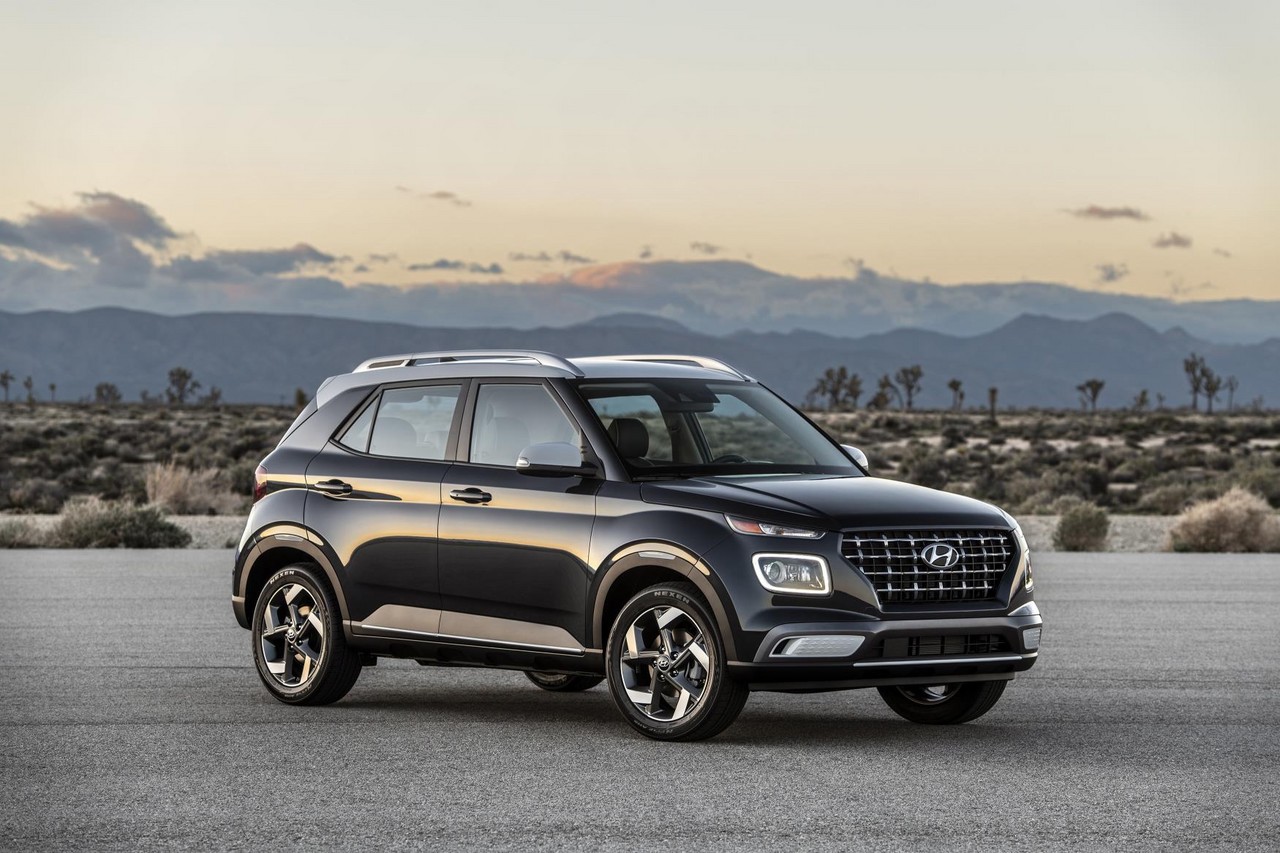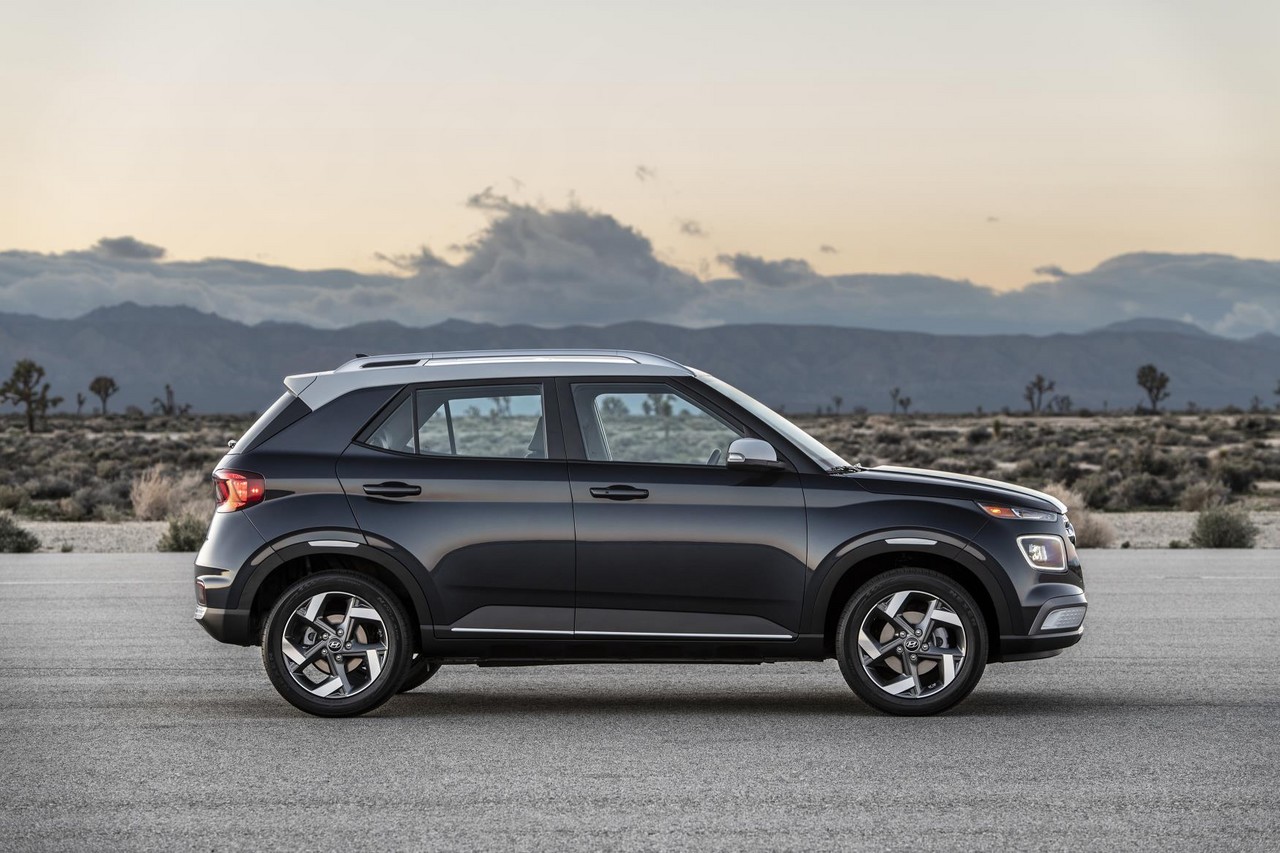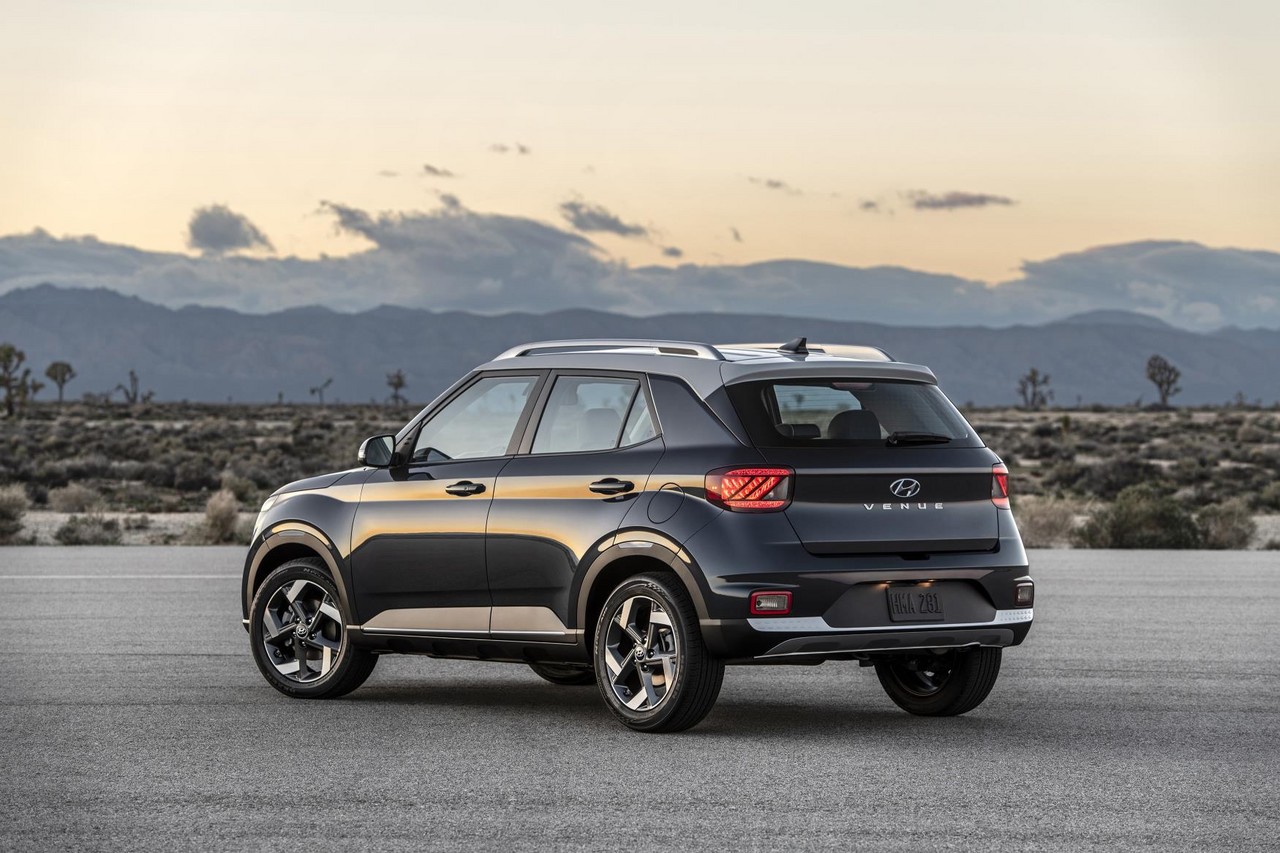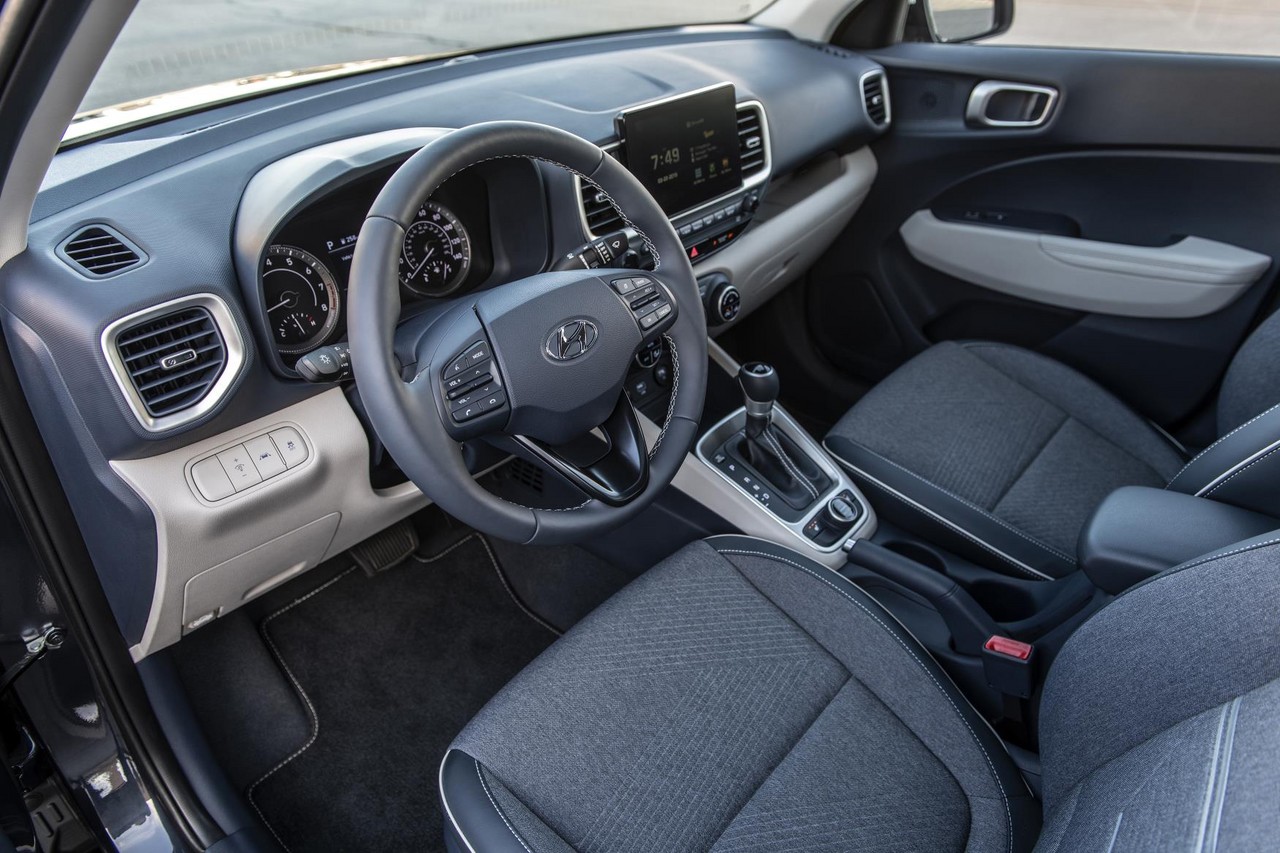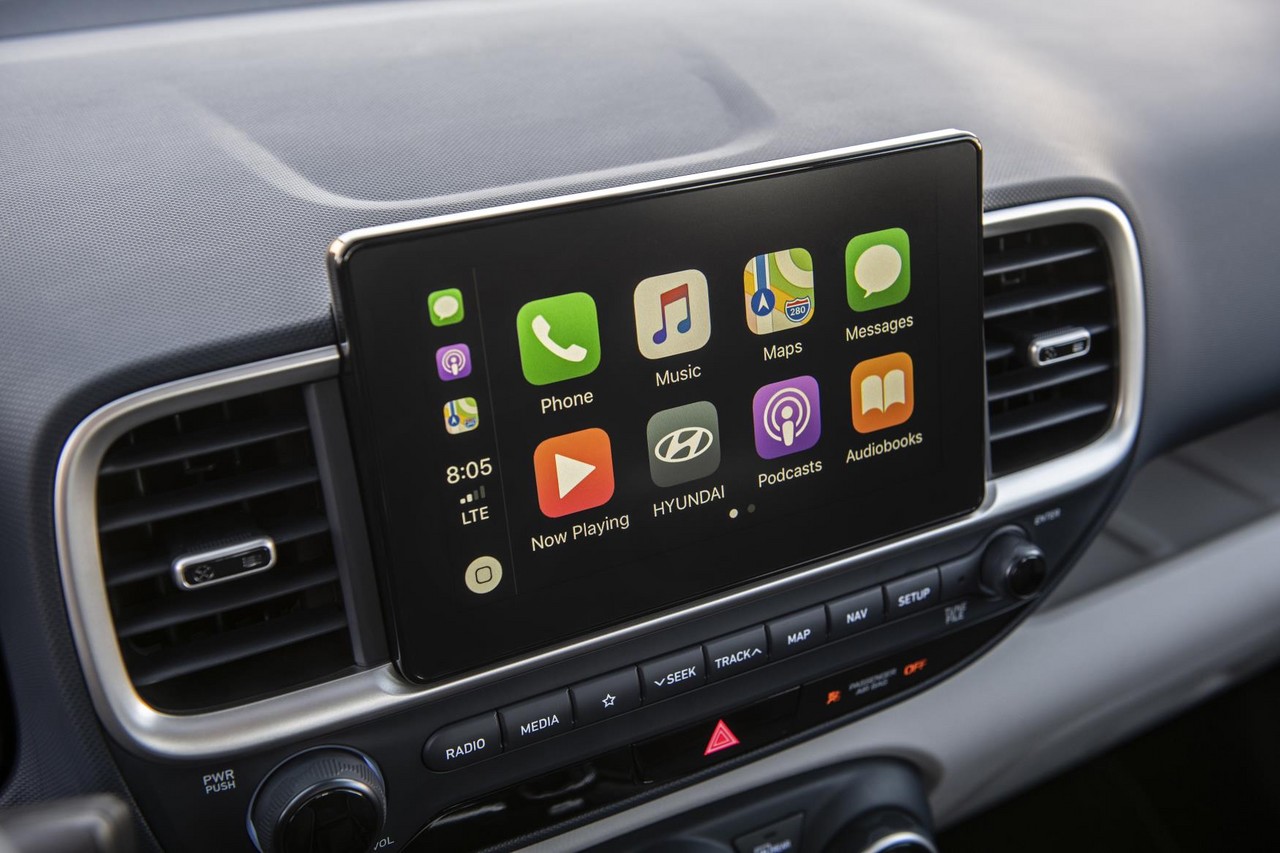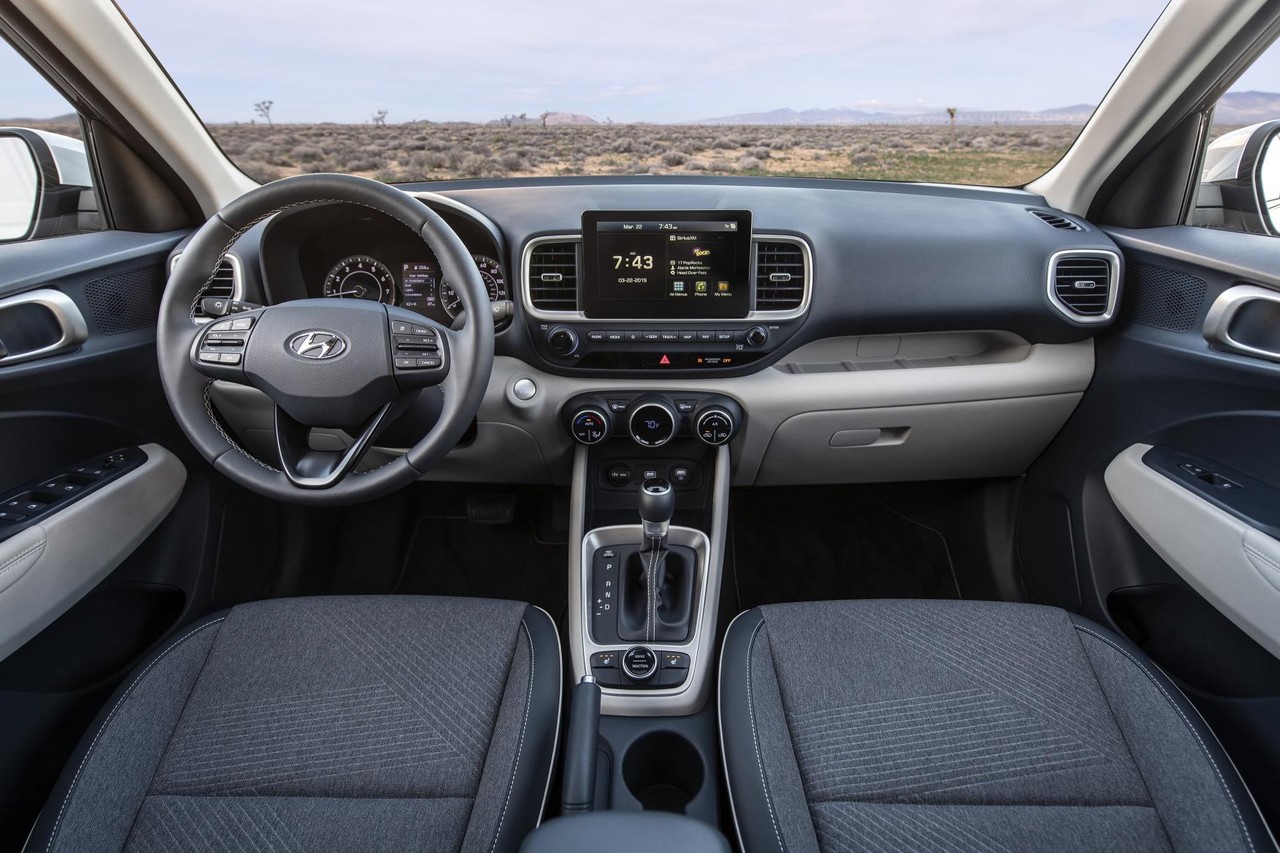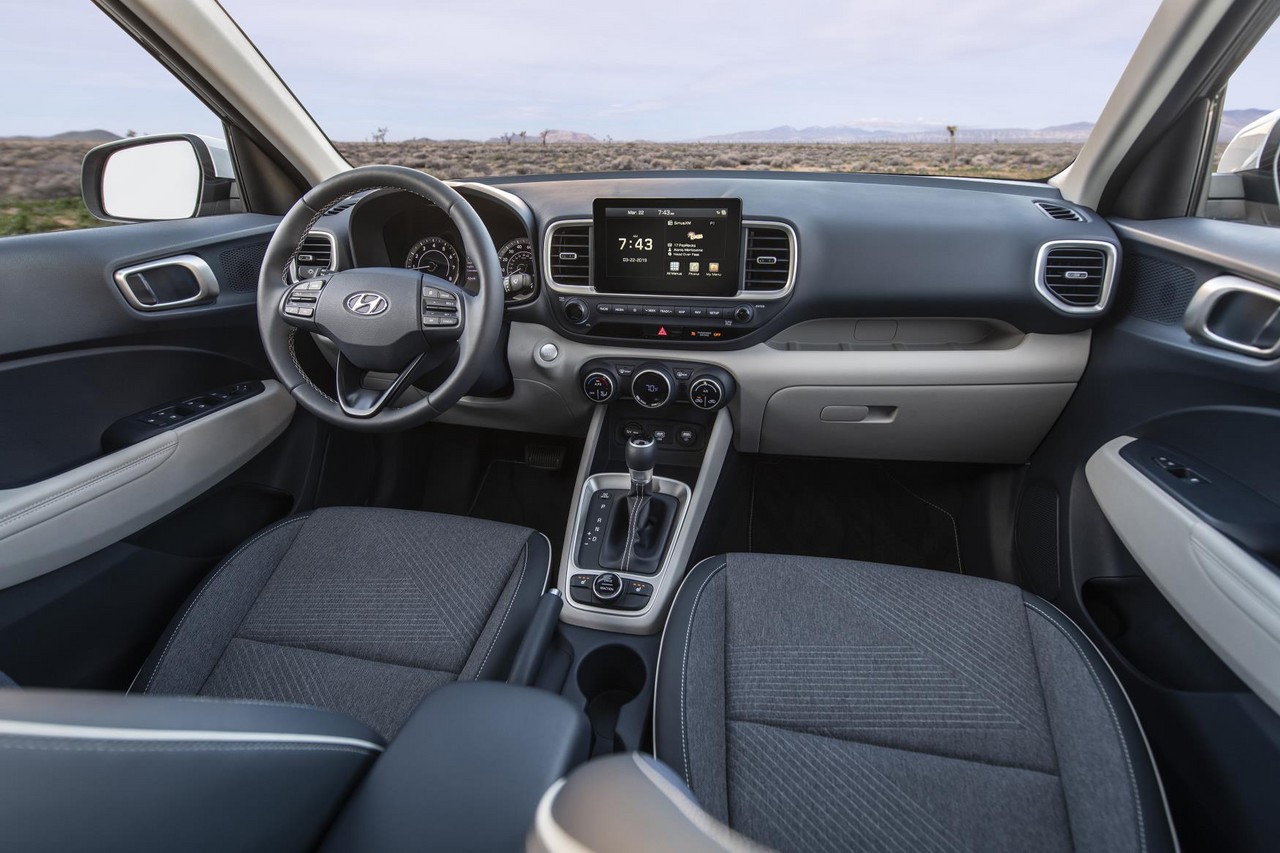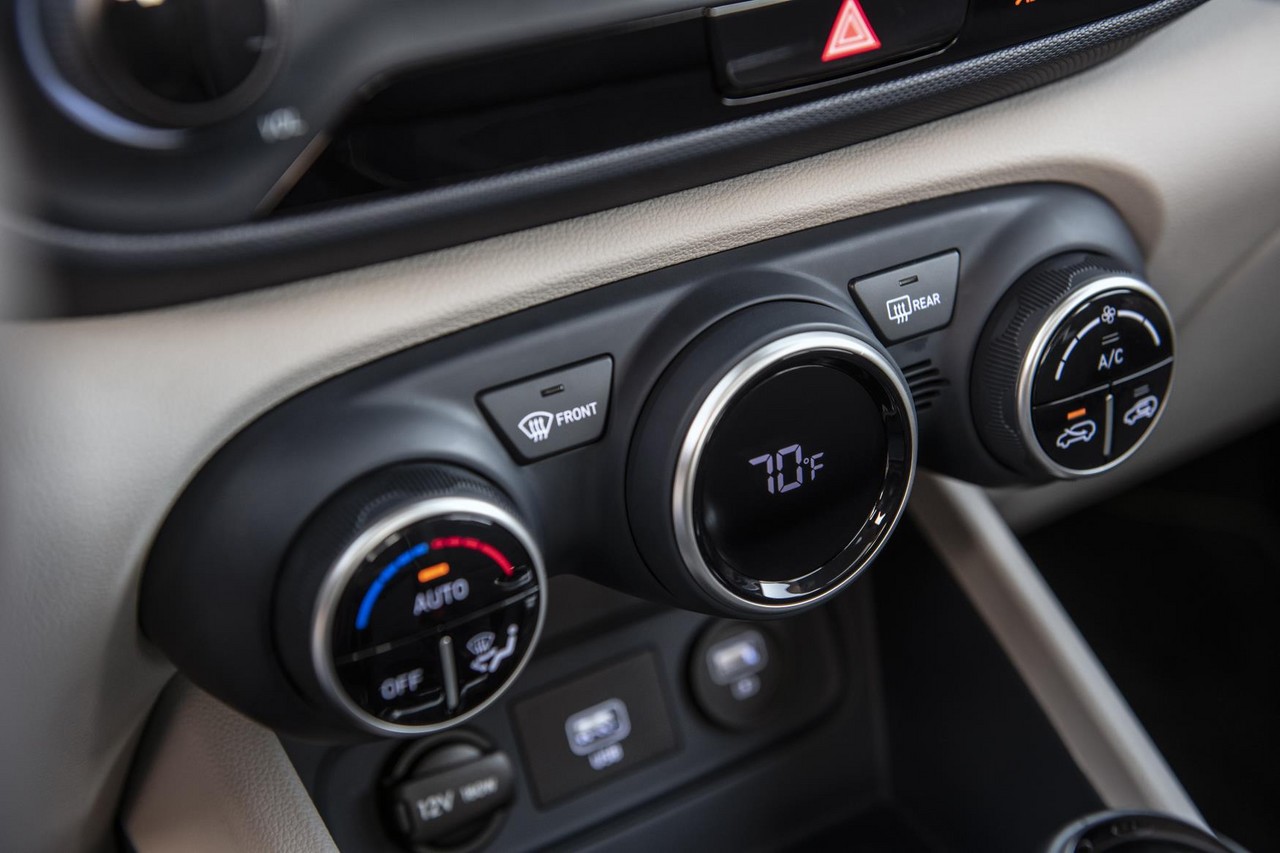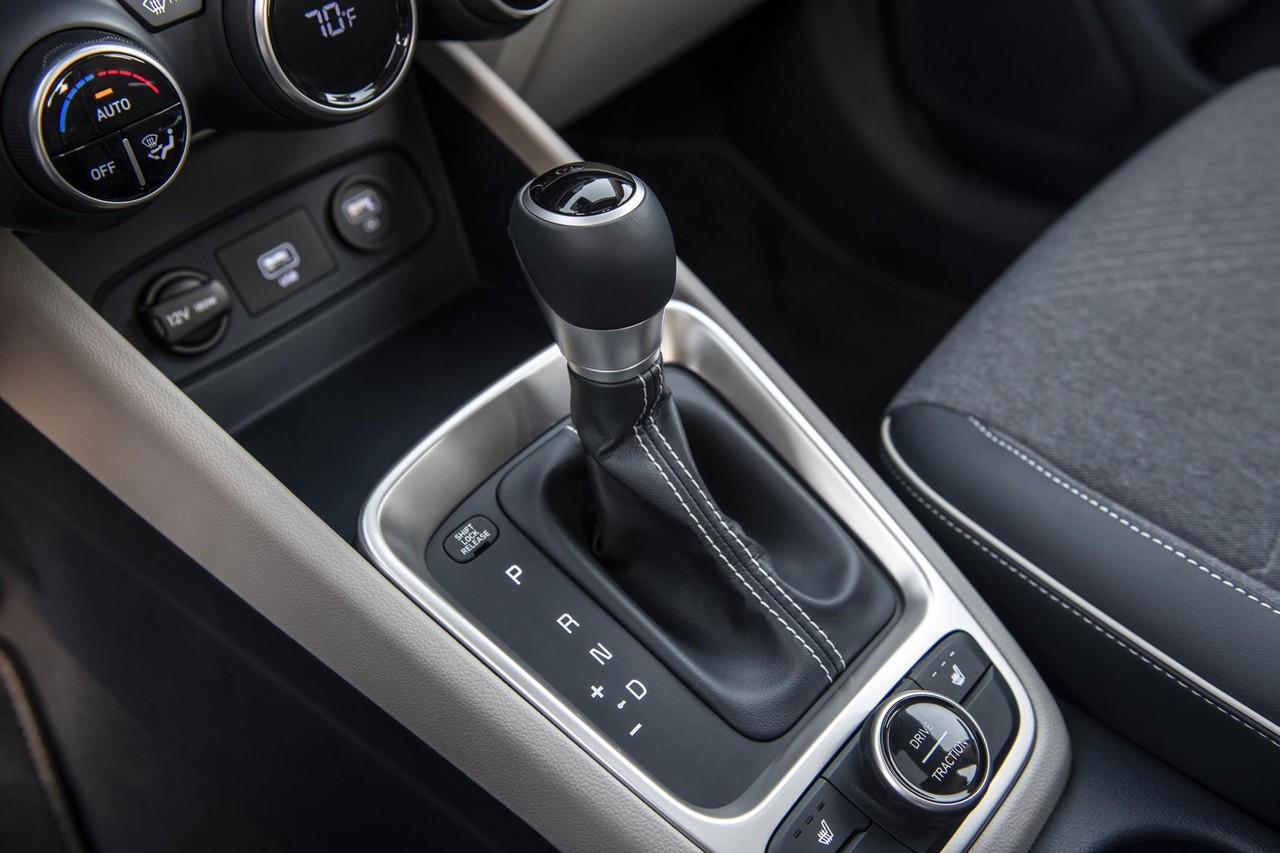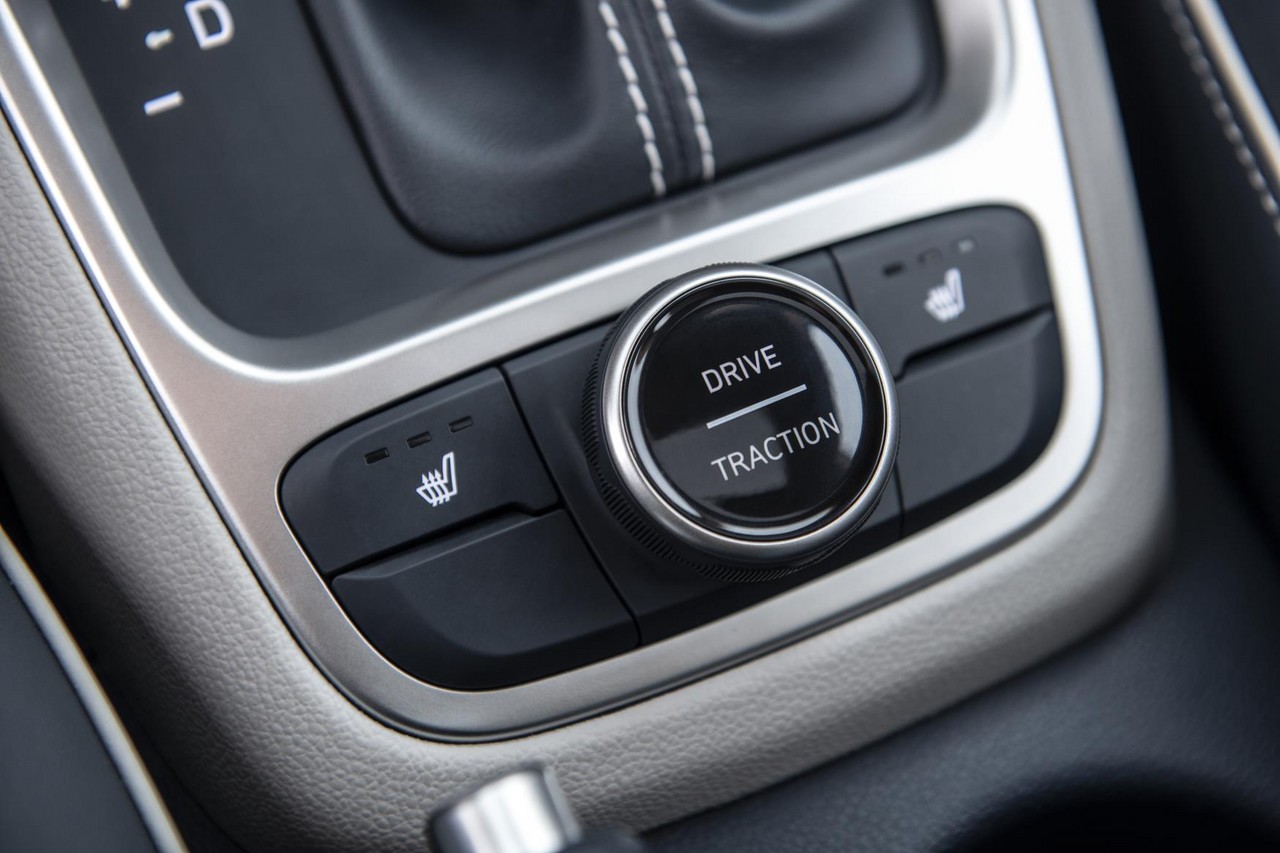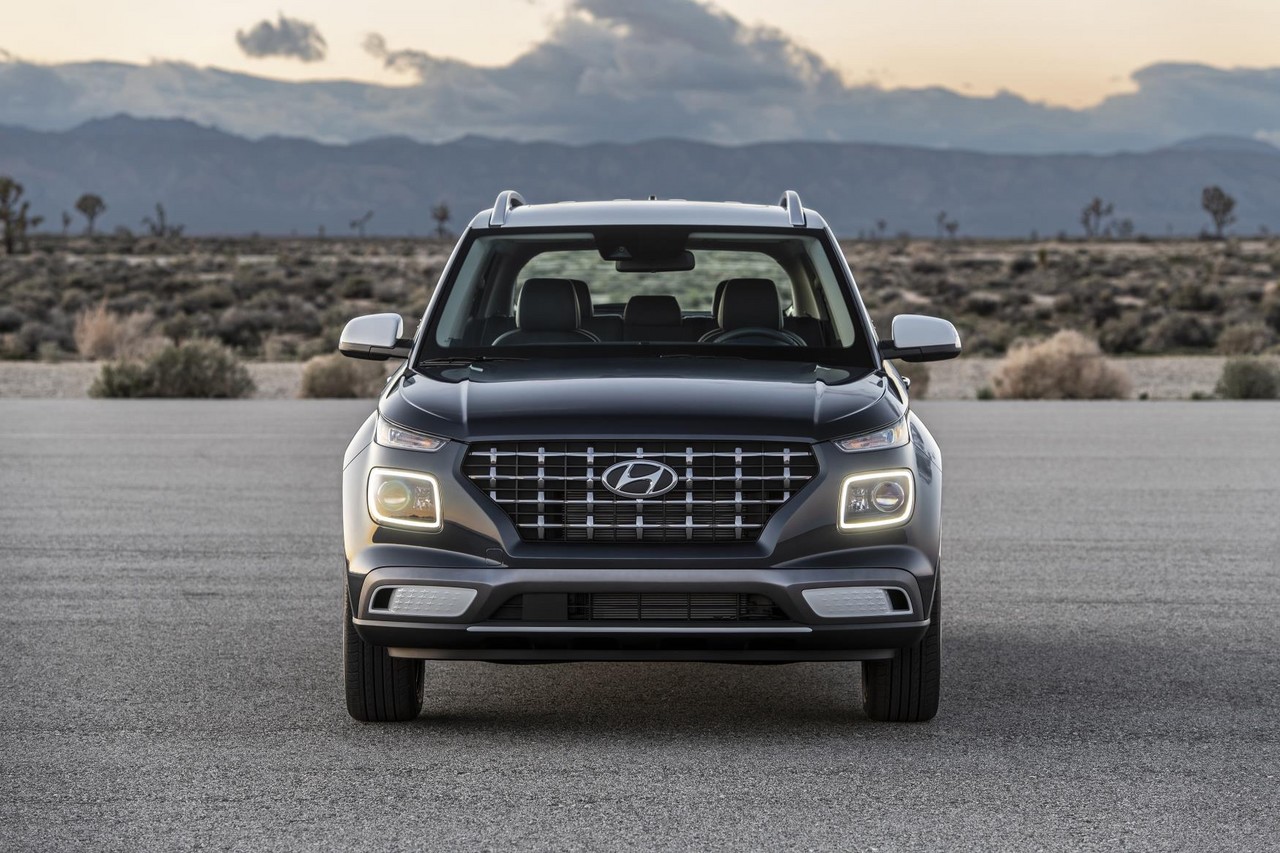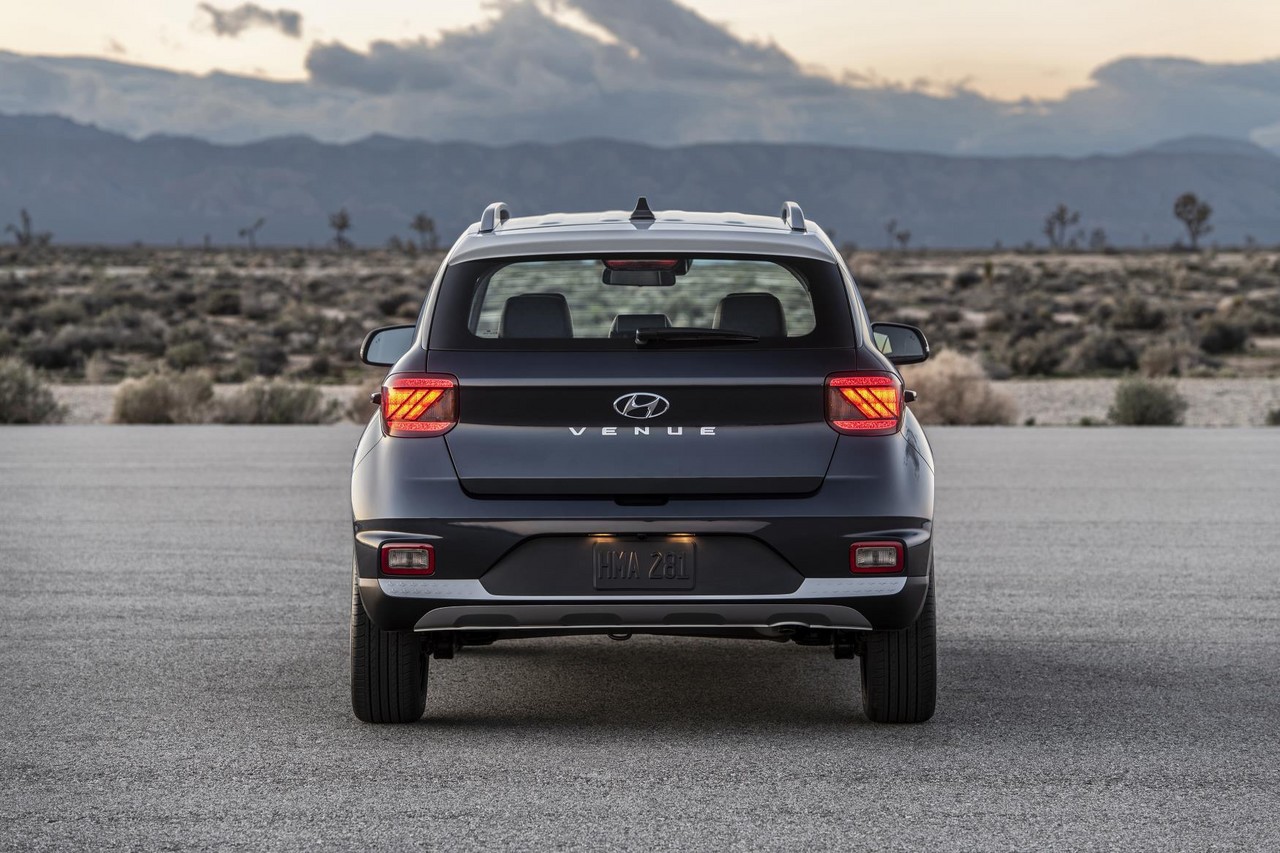
- Low retail pricing (though wait for the Kia Seltos)
- Competent ride/handling balance
- Autonomous Emergency Braking (AEB) fitted as standard
- Eight-inch touchscreen
- Steering is light…
- … but lacks feel
- Underwhelming engine is noisy under load
- No rear air vents
- Hard interior plastics
- For Venue Elite, poorer ride quality due to 205/55 R17 tyres
- Expected four-star ANCAP safety rating
Overview
Released in Australia in September 2019, the Hyundai QX Venue was a five-door compact crossover SUV. Manufactured in Ulsan, South Korea, the front-wheel drive Hyundai QX Venue was powered by a 1.6-litre four-cylinder petrol engine that was mated to either six-speed manual or automatic transmissions. Furthermore, the Hyundai Venue range consisted of Go, Active and Elite editions.
| Engine | Edition | Trans. | Peak power | Peak torque |
|---|---|---|---|---|
| 1591 cc G4FG turbo petrol I4 | Go, Active |
6sp man., 6sp auto |
90 kW at 6300 rpm | 151 Nm at 4500 rpm |
| Elite | 6sp auto |
Body and dimensions
Sharing its architecture with the Kia Seltos, the Hyundai QX Venue was 4260 mm long, 1720 mm wide, 1470 mm tall and had a 2530 mm long wheelbase; ground clearance was 170 mm. Inside, luggage capacity for the Hyundai Venue was 355 litres.
The Hyundai QX Venue had an unladen weight of 1674 kg.
Suspension and steering
The Hyundai QX Venue had MacPherson strut front suspension and a torsion beam rear axle. Furthermore, Australian-delivered vehicles had a locally developed suspension tune.
The Hyundai Venue had rack-and-pinion steering with electric power assistance.
Safety equipment
Standard safety equipment for the Hyundai QX Venue included dual front airbags, front seat-mounted side airbags, full-length curtain airbags, ABS, electronic brakeforce distribution, brake assist, electronic stability control, traction control and front seatbelts with pre-tensioners and load limiters.
As standard, the QX Venue was equipped with the following ‘Hyundai SmartSense’ safety technologies:
- Forward Collision-Avoidance Assist (FCA): operating at speeds above 10 km/h, FCA used the front radar sensor and windscreen-mounted camera to detect pedestrians (at speeds up to 70 km/h) and vehicles (at speeds up to 180 km/h). If a potential collision was assessed, a warning chime would sound and a warning would be displayed in the instrument cluster. If the driver did not respond, the brakes would be activated autonomously. At speeds below 80 km/h, the system would attempt t
- o bring the vehicle to rest; above 80 km/h, the system would attempt to reduce vehicle speed;
Lane Keeping Assist – Line/Road-Edge (LKA-L/R): operating at speeds above 60 km/h, LKA-L/R used the windscreen-mounted camera to detect lane markings and the road edge to monitor the vehicle’s position in the lane. If the vehicle departed from its lane without the indicators having been activated, audible and visual warnings would be issued; - Driver Attention Warning (DAW): operating at speeds above 60 km/h, DAW monitored steering angle, steering torque and the vehicle’s position within its lane to detect inattentive or fatigued driving. If detected, the driver was alerted via an audible tone and a message that suggested they take a break;
- High Beam Assist (HBA): operating at speeds above 40 km/h in its ‘Auto’ mode, HBA used a windscreen-mounted camera to detect oncoming vehicles and vehicles in the same lane. If detected, HBA would switch to low-beam headlights to avoid dazzling other drivers. When vehicles were no longer detected, the system would revert to high beam headlights for greater visibility; and,
- Tyre-pressure monitoring.
The Hyundai Venue Elite was also equipped with:
- Blind-Spot Collision Warning (BCW): operating at speeds above 30 km/h, BCW used radar sensors to monitor the rear corners of the Hyundai Venue. If another vehicle was detected, a visual alert would appear in the relevant exterior mirror. If the driver then activated the indicators, an audible signal would be emitted; and,
- Rear Cross-Traffic Collision Warning (RCCW): using the rear radar sensors to scan a 180-degree area behind the vehicle, RCCW operated when the Hyundai Venue was reversing to detect approaching traffic that may cross the driver’s path. If detected, the driver would receive visual and audible warnings.
Wheels, tyres and brakes
The Hyundai Venue Go and Active had 6.0J x 15-inch wheels (steel and alloy, respectively) with 185/65 R15 tyres. The Venue Elite, however, had 6.5J x 17-inch alloy wheels with 205/55 R17 tyres.
Across the range, the Hyundai QX Venue had 280 mm by 23 mm ventilated front brake discs and 260 mm by 10 mm solid rear discs.
Features: Hyundai Venue Go
The standard infotainment system for the Hyundai Venue included an 8.0-inch touchscreen, a four speaker sound system, Bluetooth connectivity (Hyundai Auto Link) and smartphone integration (Apple CarPlay and Android Auto).
Beyond this, standard features for the Hyundai Venue Go included air conditioning, cruise control, a reversing camera, dusk-sensing headlights, daytime running lights, remote central locking, power mirrors and windows, tilt and telescopic steering wheel adjustment, a trip computer and an immobiliser.
Features: Hyundai Venue Active
Compared to the Venue Go, the Venue Active could be identified by its alloy wheels, LED daytime running lights and exterior mirrors with LED side repeaters. Furthermore, standard features were extended to include rear parking sensors, a leather-appointed steering wheel and gear knob, power folding door mirrors and front centre console armrest.
Features: Hyundai Venue Elite
The range-topping Hyundai Venue Elite was distinguished by its 17-inch alloy wheels, satellite navigation system, ‘premium’ finish cloth seats, climate control air conditioning, LED tail-lights, rear privacy glass, front USB power outlet and two-tone roof.
Specifications
